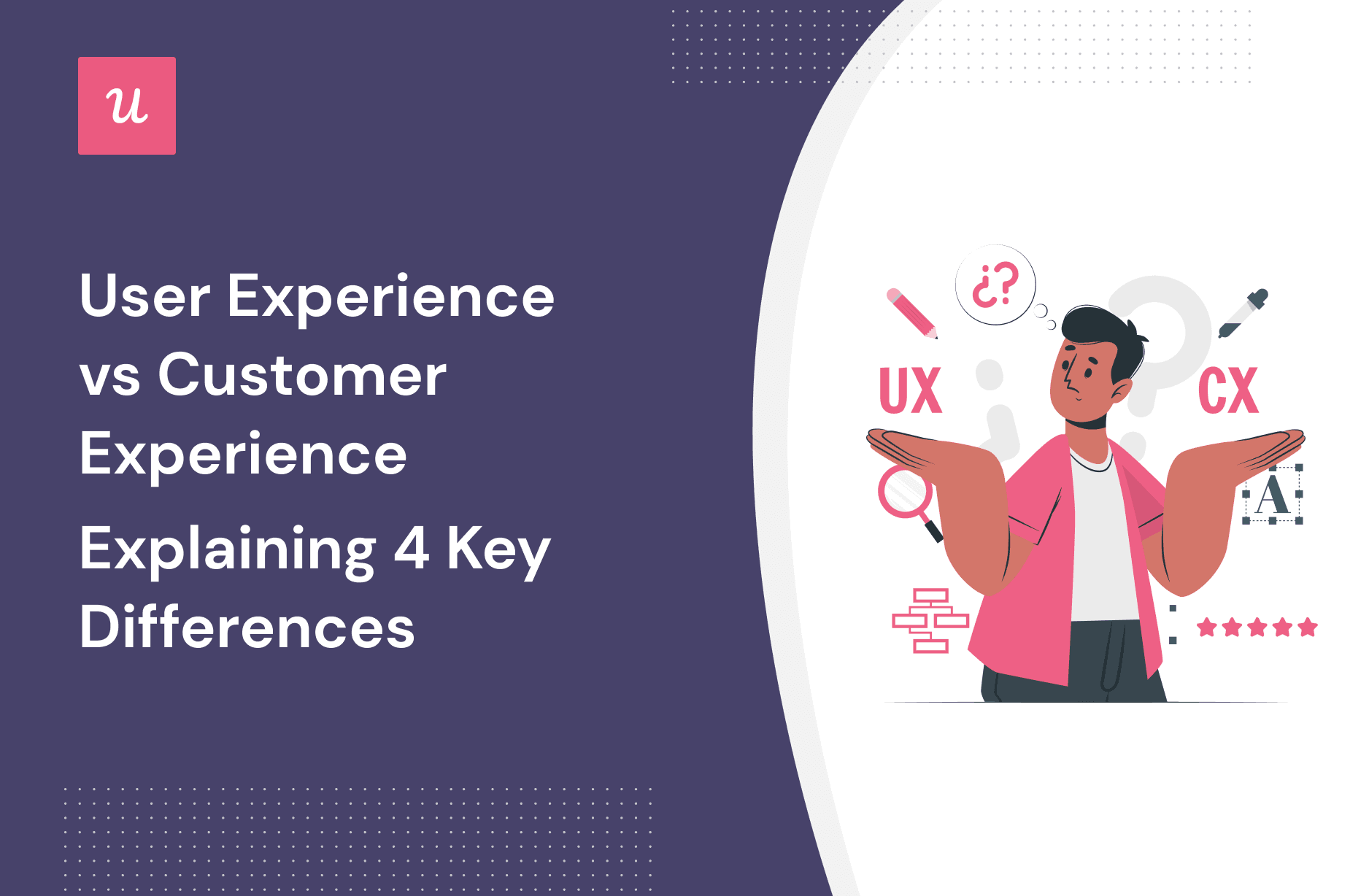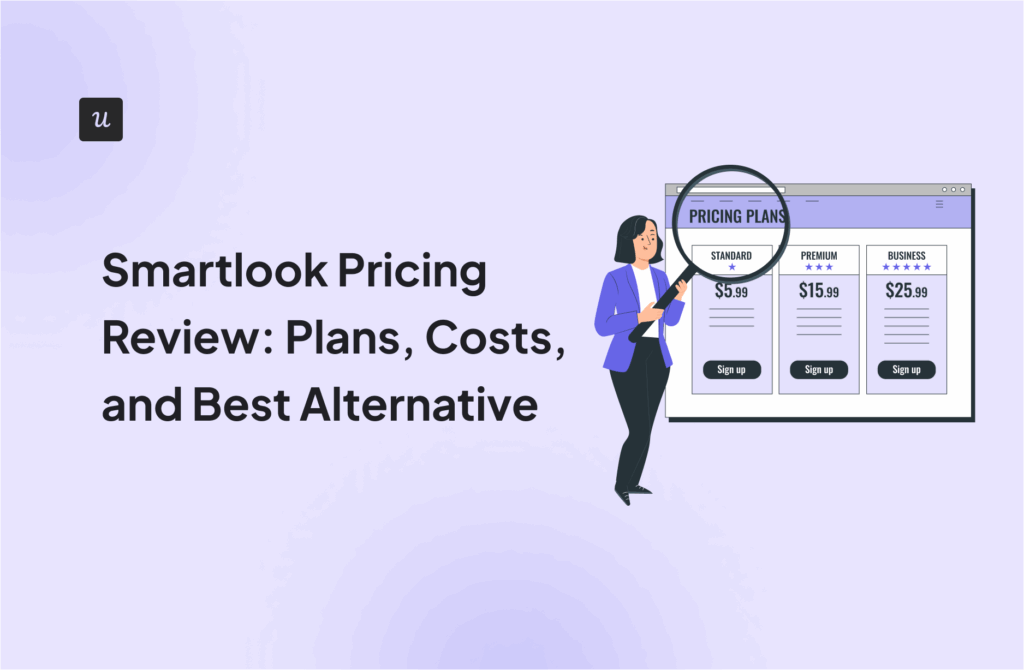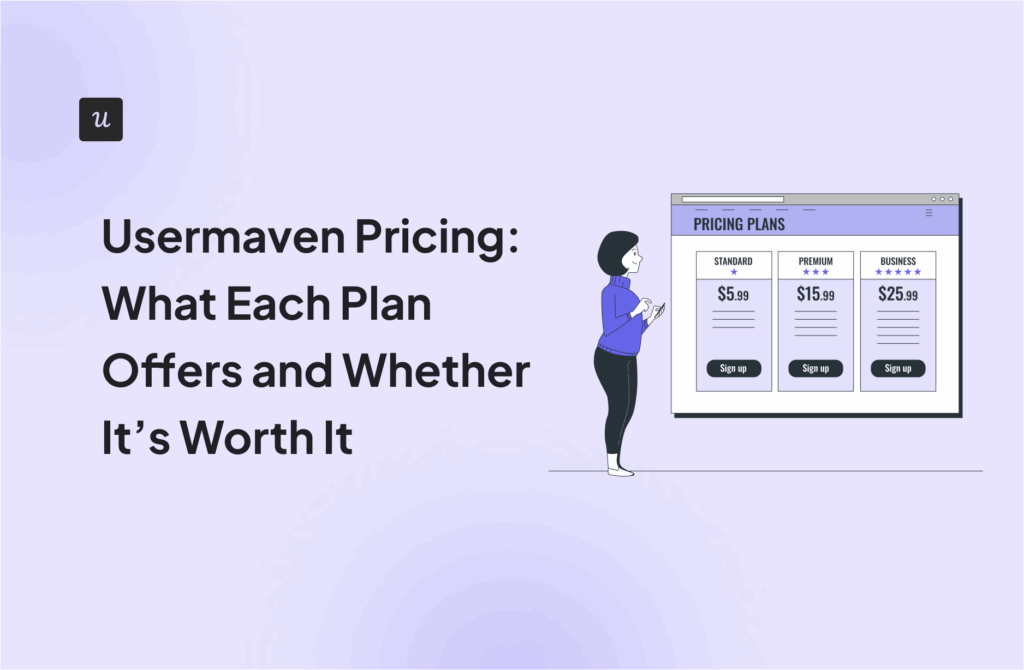
UX vs CX (User Experience vs Customer Experience): Explaining 4 Key Differences
What’s the difference between UX vs CX?
Some people use the terms interchangeably and believe it’s just semantics. That’s not entirely true. UX deals with a user’s interactions with specific aspects of your product, while CX is broader and covers all customer engagements with your brand.
Read on to find four key differences between UX and CX and how to improve both.
Try Userpilot Now
See Why 1,000+ Teams Choose Userpilot

What is user experience?
User experience (UX) is the sum of a user’s thoughts, impressions, and feelings as they interact with specific aspects of your product.
UX is mostly used in the context of digital experiences with mobile apps, software products, or websites.
What is customer experience?
The customer experience (CX) encompasses all customer interactions with every aspect of your company as they move through the user journey stages.
It includes everything from how customers perceive your marketing messages to what they think about your pricing fairness, customer service, product suites, etc.
4 Key differences between UX and CX
UX is part of CX, and it’s almost impossible to satisfy customers if you focus on one and leave the other.
The definitions above have shown you the basic distinctions. Let’s dig further so you can clearly understand how the two concepts differ.
CX encompasses a wider range of target audiences than UX
Both UX and CX are customer-centric. But UX focuses on in-app users, while CX considers the customer journey as a whole—from the initial touchpoint to when they churn:
UX focuses on end users of the product
User experience is solely concerned with the usability of a product or service.
To help the end user make the most of your tool, it asks questions like:
- Do users take more time than necessary to master this feature?
- Are users satisfied with the app’s design?
- What could make the in-app experience better?
- Etc.
It’s important to know the end user isn’t always your customer. For example, imagine a CEO purchasing your onboarding tool for their product manager to help design onboarding flows. The CEO is your customer because they’re the one paying, but your end user is the product guy that uses your tool to create onboarding experiences.
When optimizing UX, your attention shifts from the CEO to how the product manager uses the tool.
CX focuses on customers across the entire customer journey
Unlike UX, customer experience is concerned with both customers and end users. Its goal is to build mutually beneficial relationships with everyone interacting with the brand.
The idea is to create a good brand impression in the minds of prospects and customers to increase sales, customer satisfaction, and loyalty. It achieves this by optimizing every touchpoint and channel of interaction between the customer and the brand.
For example, ensuring customers take product demos seamlessly is part of CX.
CX goals: overall customer experience; UX goals: product experience
Ultimately, UX and CX aim to make people fall in love with your company and become repeated users of your products. They both have slightly different objectives that pour into the overall goal. Below are some goal variations in UX vs CX:
UX aims to help users complete tasks easily using your product
There’s a wide range of methods you can implement to ensure users interact smoothly with your tool.
Let’s go over some of them:
- Conduct product research & develop user personas: Don’t assume you know your users—especially when you don’t have data to back up your assumptions. Instead, use surveys and behavior analytics tools to understand them. Then build different user personas based on the data collected.
This way, you can always draw on your detailed user personas to create exciting and engaging in-app experiences. Below is a template you can use if you’re wondering what to include in your persona.

- Build prototypes: A prototype is a sample of your product that you send for testing and idea-sharing before passing it over to the engineering team for final development. Depending on your needs, you can create simple clickable prototypes in platforms like Figma or code from scratch.
- Usability testing: The primary purpose of usability tests is to observe how users interact with your tool and identify ways to create better experiences. It’s important to conduct multiple usability tests for different phases of your product development cycle. The tests can be moderated or unmoderated, but we recommend moderated virtual tests for more accurate results in the initial phase.

- Create frictionless experiences: Implement product analytics to understand what causes friction and note dropoff points in the user journey. Then use the information to create in-app guidance and ensure users don’t lose their way around your tool.
For in-app guidance, you can use UI elements like slide-outs, modals, or interactive walkthroughs built from multiple tooltips as in the image below:

CX aims to create great experiences throughout the customer journey
Considering the overall customer journey ensures satisfaction at every stage. This nurtures loyalty and increases customer retention.
You can create great experiences using a wide range of methods and activities. Here’s how:
- Research and map out all touchpoints across customer journeys: Outline the SaaS journey stages: Awareness, Acquisition, Adoption, Renewal, Expansion, and Advocacy. Then list the touchpoints for each stage based on your brand strategy, and ensure every touchpoint satisfies customers.
- Use VOC surveys to uncover customer sentiments: Voice of the Customer surveys help you know if your product satisfies customer expectations. You can send CSAT, CES, or NPS surveys in-app across touchpoints to collect customer sentiment, identify pain points, and note changes you can make to improve the overall experience.
- Develop high levels of customer service: Go beyond traditional customer service to build self-serve resource centers that customers can visit anytime. Diversify the content types to cater to different journey paths and learning preferences. For example, you can include articles, help docs, tutorial videos, chatbot, etc., and organize your modules according to the user journey.

Use usability tests for UX and surveys for CX
Both UX and CX involve testing but with different objectives and methodologies.
Let’s go over the key UX vs CX testing variations.
UX testings ensure the product is easy to use
When you conduct usability tests, your primary aim is to find out from users the efficiency, simplicity, and user-friendliness of your products.
From outdoor guerilla testing to moderated lab tests, there are different usability testing methods and tools, depending on the results you want to achieve. If you’re a beginner, you can start by using software products like Lookback or Maze for screen recording and to measure click rates, completion rates, time spent on features, etc.
CX testings focus on overall customer satisfaction
CX testing helps to identify the strengths and weaknesses of workflows involving customers.
The main tools for customer experience testing are customer surveys—Net Promoter Score (NPS), Customer Effort Score (CES), and Customer Satisfaction Surveys (CSAT).
There are broadly two approaches to collecting feedback: relationship and transactional surveys. The former are those high-level surveys you send to gauge a customer’s overall satisfaction with your brand.
E.g. “How likely are you to recommend us to your colleagues?”
Transactional surveys, on the other hand, are the surveys you trigger after key interactions with specific aspects of your tool.
For example, the survey below is transactional because it was sent after a specific experience.

Use engagement metrics for UX and retention metrics for CX
Metrics show you at a glance how your company is performing. And as you’d expect, UX and CX also differ in key metrics:
UX uses user interaction and engagement metrics
You can track many UX metrics to understand usability and product success. But the major ones for B2B SaaS are:
- Product usage rate: This metric measures how much of the product your users engage per time. It’s usually calculated by grouping users into heavy, moderate, and light.
Heavy users engage with multiple features of your tool and always use your product to achieve their goals. Moderate or light users aren’t inactive customers. They’re just people who don’t have to use every aspect of your tool all the time.
- Feature engagement rate: This metric measures the percentage of users actively engaging with specific features. For example, every software product has one or two primary features that new users must adopt to enjoy the product’s true value. You can measure the engagement rate for these core features to understand how well new users are settling into your tool.
- Trial to paid conversion rate: As the name suggests, the trial to paid conversion rate is the percentage of trial users that convert to paying customers. You can use this metric to monitor the effectiveness of your in-app experiences in driving conversions—with some exceptions, low conversion is often a sign that your in-app experiences aren’t demonstrating your app’s value and vice versa.
CX uses customer loyalty and retention metrics
Now let’s go over some important metrics customer experience professionals use to measure overall customer health:
- Customer lifetime value (CLV): This metric measures how much revenue your company can expect from a user throughout their time with your product. High CLV shows customer loyalty and indicates you’re doing something right.
- Net promoter score (NPS): This metric is also a good indicator of customer loyalty. You can easily categorize customers as promoters, passives, or detractors based on their NPS scores and instantly tell the average customer experience.
- Customer effort score (CES): This customer experience metric tells you how much effort customers exert when interacting with your business. Your CES will be high if your product is buggy or users must go through many steps to contact support.
- Customer satisfaction score (CSAT): Similar to CES, this customer experience metric measures customer happiness with your product or service.
- Retention rate: The retention rate is the percentage of users that keep buying from you over a given period. You can measure this metric monthly, quarterly, or annually. The frequency is your choice but measure it regularly to keep track of your company’s health. Consistently high retention rates show your customers are happy and satisfied with their experience.
- Churn rate: In contrast to the retention rate, your churn rate is the percentage of customers that leave your company over a given period.
How Userpilot helps improve the user experience for SaaS
Improving UX without a third-party tool for building in-app experiences and collecting customer data can be difficult.
But Userpilot has you covered. Without writing a line of code, our tool helps you to:
- Dig into advanced product analytics: You can tag specific features you need to track or use custom events to define your growth goals. Userpilot tracks user activities in the background and shows you live results in a dashboard:

You can also track usage trends by segment. For example, you can segment new users and measure their engagement with specific features.
- Build in-app experiences: After examining your customer engagement data, you might want to trigger experiences to guide and educate customers. That’s easily done with Userpilot.
Our platform allows you to use UI elements like tooltips, modals, driven actions, etc., to trigger contextual experiences and boost engagement.

- Send in-app surveys to collect feedback: You can send feedback surveys through email or even social media, but in-app is more effective because the experience is still fresh in their minds. Another benefit is that in-app surveys can be triggered contextually, increasing your chances of getting more accurate responses from users.
Userpilot allows you to build different kinds of in-app surveys and analyze the results for proper decision-making. For example, below is a screenshot of building an NPS survey alongside the follow-up questions for each score:

And with Userpilot’s native mobile SDK, you can create targeted onboarding flows using slideouts, carousels, and push notifications without writing extra code, extending these powerful UX enhancements to your mobile applications.
Conclusion
By now, you understand that UX and CX are different in terms of target audiences, goals, testing, and key metrics.
However, it is crucial not to neglect one while improving the other. Users can still be frustrated if features are efficient but other aspects like pricing and customer service make them unhappy.
So, why not stop trying to choose between UX vs CX and embrace Userpilot to improve both and crush your business and customer goals? Book a demo now to see how.






